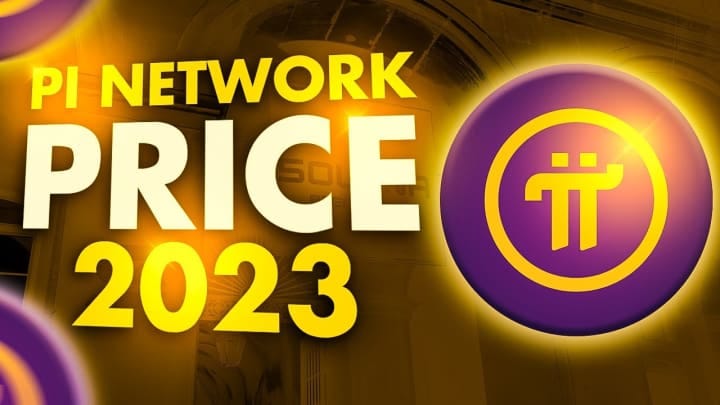Will Governments Accept Pi Coin As Legal Tender?

Executive Summary

The question of whether governments will accept Pi Coin as legal tender is complex and hinges on several interconnected factors. While Pi Network’s ambitious goals and growing community are impressive, widespread government adoption faces significant hurdles. This article explores the key challenges and opportunities, examining Pi’s technological foundation, regulatory landscape, economic implications, and the overall trajectory of cryptocurrency adoption by governments globally. Ultimately, the future of Pi as legal tender depends on a confluence of technological advancements, regulatory clarity, and a demonstrably secure and stable cryptocurrency ecosystem.

Introduction
Pi Network, a cryptocurrency project aiming for mass adoption, has garnered significant attention. Its unique mining process, accessible via a mobile app, has attracted millions of users. However, the question remains: will governments ever consider accepting Pi as legal tender? This is a multifaceted issue, touching upon the volatile nature of cryptocurrencies, existing monetary policy frameworks, and the potential implications for national economies. This article delves into the key considerations surrounding this question, examining both the potential benefits and significant challenges that lie ahead.
FAQ
-
Q: What is Pi Coin? A: Pi Coin is a cryptocurrency project that allows users to “mine” Pi using a mobile app, unlike resource-intensive mining methods of other cryptocurrencies like Bitcoin. It aims to be a user-friendly and accessible cryptocurrency for the masses.
-
Q: Is Pi Coin already usable for transactions? A: Not yet. Pi is currently in its testing phase and is not yet available for widespread transactions or exchanges on major cryptocurrency platforms. The network is still under development.
-
Q: What are the chances of Pi being accepted as legal tender? A: The chances are currently low. Widespread government adoption of any cryptocurrency, including Pi, requires significant regulatory frameworks, proven stability, and addressing concerns about volatility and security.
Pi Network’s Technological Infrastructure
Pi Network’s technological infrastructure is a crucial aspect influencing its potential for government adoption. The project’s core technology, its scalability, and security measures will need to undergo significant scrutiny before governments consider integration into their financial systems.
-
Stellar Consensus Protocol (SCP): Pi utilizes SCP, a variation of the Byzantine fault tolerance algorithm that allows for faster transaction processing compared to other consensus mechanisms. However, its long-term scalability needs further testing and proven performance under intense network load.
-
Mobile-First Approach: The app-based mining system is a unique and potentially beneficial aspect, simplifying access for a broader user base. However, this accessibility also presents challenges regarding security and potential vulnerabilities to malicious actors.
-
Security Audits & Transparency: Independent and rigorous security audits are crucial. The transparency of the codebase and the network’s operational processes are essential to instill confidence among potential government adopters.
-
Scalability and Transaction Speed: For widespread adoption as legal tender, Pi needs to handle a massive volume of transactions efficiently and quickly. This is a critical challenge for many cryptocurrencies, and Pi needs to demonstrate its ability to achieve this level of scalability.
-
Decentralization: The degree of decentralization of the Pi Network is important. Governments often prefer systems that are not easily controlled by a single entity or a small group. A high degree of decentralization ensures the robustness and resilience of the system.
Regulatory Landscape and Legal Frameworks
The regulatory landscape surrounding cryptocurrencies is complex and varies significantly between countries. The legal frameworks governing digital currencies will play a pivotal role in determining whether governments embrace Pi as legal tender. Navigating these complexities is a significant hurdle for Pi Network.
-
International Regulatory Harmonization: A lack of globally harmonized regulations creates uncertainty. Governments are hesitant to adopt cryptocurrencies without clear legal frameworks and international consensus on their usage and regulation.
-
Anti-Money Laundering (AML) and Know Your Customer (KYC) Compliance: Pi Network must demonstrate its adherence to AML and KYC standards to address concerns about illicit activities using the cryptocurrency.
-
Taxation Policies: Clear and consistent taxation policies surrounding Pi are necessary to avoid legal ambiguities and ensure its seamless integration into existing financial systems.
-
Central Bank Digital Currencies (CBDCs): The rise of CBDCs poses a challenge to cryptocurrencies such as Pi. Many governments are actively exploring CBDCs as a means to control and manage their monetary policy. This may limit the appeal of alternative digital currencies.
-
Data Privacy and Security Regulations: Governments must be assured that Pi’s infrastructure complies with data privacy and security regulations, protecting sensitive user information.
Economic Implications and Stability
The economic implications of widespread Pi adoption as legal tender are far-reaching. Its inherent volatility, potential impact on inflation, and the overall stability of the cryptocurrency are key considerations for governments.
-
Price Volatility: The unpredictable price fluctuations of cryptocurrencies are a major concern. Governments are unlikely to accept a volatile currency as legal tender due to the risks to their monetary policies and national economies.
-
Inflationary Pressures: The potential for Pi’s value to fluctuate significantly could lead to inflationary pressures, potentially undermining the stability of the economy.
-
Economic Impact on Existing Financial Systems: Adoption of Pi as legal tender could significantly disrupt existing financial institutions and systems, requiring significant adjustments.
-
Market Capitalization and Adoption Rate: The market capitalization and adoption rate of Pi will significantly influence the willingness of governments to consider its adoption. A larger, more widely accepted network increases the chances of official acceptance.
-
Economic Diversification and Financial Inclusion: Some governments might view the adoption of a cryptocurrency like Pi as a potential tool for economic diversification and to improve financial inclusion.
The Trajectory of Cryptocurrency Adoption by Governments
The current global trend of cryptocurrency adoption by governments is cautious and incremental. Many are exploring CBDCs while remaining hesitant about accepting decentralized cryptocurrencies like Pi.
-
Gradual Adoption of CBDCs: Central banks are increasingly investigating and deploying CBDCs, suggesting a preference for government-controlled digital currencies.
-
Regulatory Uncertainty and Scrutiny: Many governments are adopting a wait-and-see approach, scrutinizing the development and adoption of cryptocurrencies before considering acceptance.
-
Security and Stability Concerns: The inherent security risks and volatility of cryptocurrencies remain major obstacles to widespread government adoption.
-
Technological Infrastructure Requirements: Integrating cryptocurrencies into existing financial infrastructure requires significant technological adaptations, which could prove expensive and time-consuming.
-
Public Perception and Education: Positive public perception and understanding of cryptocurrencies are essential for widespread acceptance. Government adoption will often follow a shift in public opinion.
Conclusion
The question of whether governments will accept Pi Coin as legal tender is ultimately one that cannot be definitively answered today. While Pi Network has shown significant progress in building a large user base and developing its technological infrastructure, several significant hurdles remain. The regulatory landscape, inherent volatility of cryptocurrencies, and the need for robust security measures all pose challenges. Government adoption would necessitate a significant shift in monetary policies and international cooperation. However, Pi’s ongoing development and the evolving landscape of cryptocurrency adoption worldwide leave the door slightly ajar, but a multitude of obstacles stand between aspiration and reality. The future of Pi as legal tender is inextricably linked to its ability to address these critical issues and convince governments of its long-term stability and security.
Keyword Tags
Pi Network, Cryptocurrency, Legal Tender, Government Adoption, CBDCs


